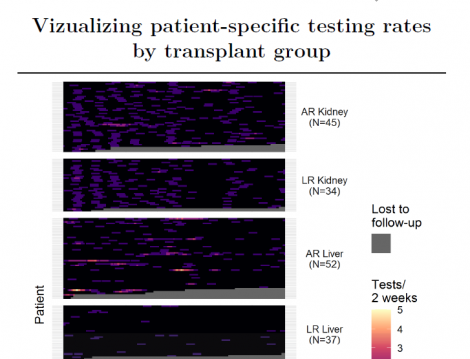Daniel Vader
Informed presence in electronic health record data: bias and bias reduction approaches in longitudinal analyses
Abstract
Electronic health record (EHR) systems capture patient information inconsistently across the lifespan, with patients contributing more data when they are sick than when they are healthy. These data capture patterns may cause "informed presence" – systematic differences in health status between observed and unobserved data – in EHR-based analyses. Exposure effects estimated under informed presence may under- or over-estimate true effect strength. There is growing interest in developing analytic approaches that account for informed presence bias, but the concept has not been formalized or applied to real-world EHR data contexts in the epidemiologic literature.
We focused on policy-relevant marginal effects in longitudinal analyses, introducing a collider bias focused conceptual framework for informed presence bias, presenting a novel graphical approach to examining patterns of observation in irregularly measured data, and illustrating four existing bias reduction approaches under informed presence. Motivated by routinely collected EHR data on pediatric solid organ transplant patients, we investigated informed presence and effects of steroid treatment on cytomegalovirus viremia in a recurrent outcomes analysis. We identified conceptual, descriptive, and analytic evidence of informed presence. Incident rate ratios dropped from 1.91 (95% CI 1.06, 3.47) in a naïve analysis to 1.49 (0.80, 2.78) when accounting for informed presence using inverse intensity weighting.
When investigators suspect informed presence, we recommend: 1) Using conceptual diagrams of the observation process to assess whether conditioning on observation is likely to induce collider bias; 2) Graphically or statistically assessing dependence between outcome and observation process; 3) If appropriate, accounting for outcome dependence in statistical analysis.
Keywords
informed presence bias, missing data, collider bias, electronic health records, selection bias, directed acyclic graphs, solid organ transplant, longitudinal analysis, recurrent outcomes analysis, data visualizationAbout Us
To understand health and disease today, we need new thinking and novel science —the kind we create when multiple disciplines work together from the ground up. That is why this department has put forward a bold vision in population-health science: a single academic home for biostatistics, epidemiology and informatics.
© 2023 Trustees of the University of Pennsylvania. All rights reserved.. | Disclaimer



